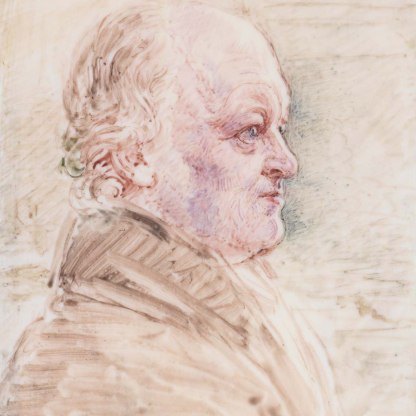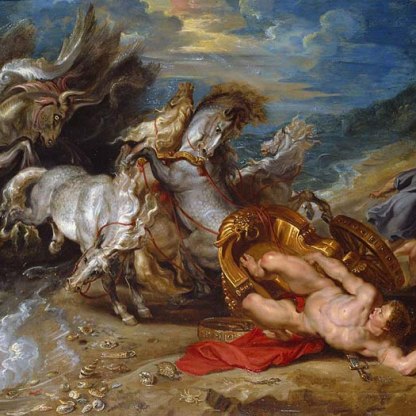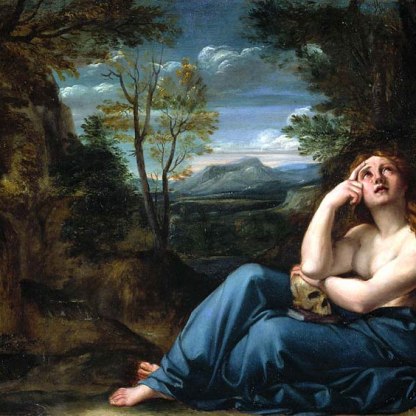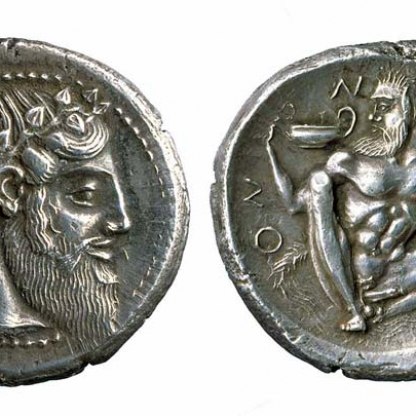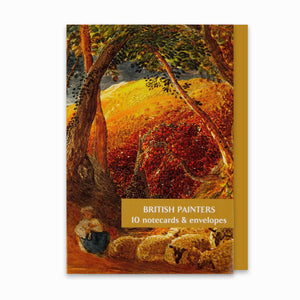The Magic Apple Tree
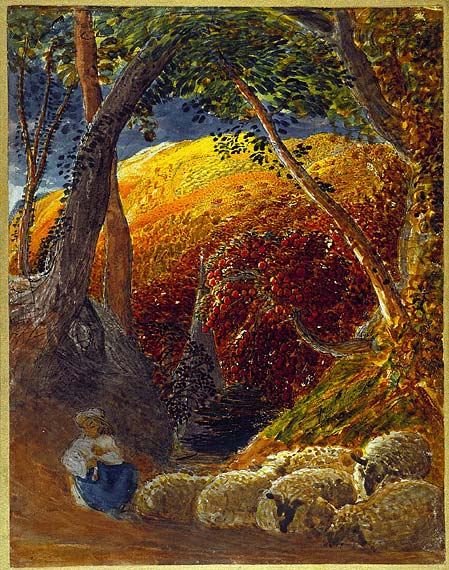
Thou crownest the year with thy goodness; and thy paths drop fatness.
They drop upon the pastures of the wilderness: and the little hills rejoice on either side.
The pastures are clothed with flocks; the valleys are also covered over with corn;
They shout for joy, they also sing.
Psalm 65, 11–13.
This richly coloured painting, perhaps the most famous work by the English artist Samuel Palmer, celebrates the bounty of nature with the same almost delirious joy as the 65th Psalm.
In the foreground a shepherdess sits and plays a pipe, her small flock huddled nearby. Abundant with wool, the sheep snooze as if lulled by the music.
In the view of the Italian countryside around Castel Gandolfo by Claude Lorraine in the Fitzwilliam PD.950-1963, there is a similar sense of rustic ease. But while Claude's painting makes reference to the mythical and poetical past of Italy, Palmer's view is an unmistakeably English pastoral.
Beyond the carefree rustic and her dozy flock, the ground dips into a valley and rises again. In the distance the fields are golden with ripe corn, some of which has already been gathered into sheaves. But despite the seemingly sun-kissed fields, the leaden sky promises rain. In the dip of the valley, the spire of a church juts out above the treetops, the only man-made structure in the painting. The trees create an architecture of their own, meeting at the top to form an arch.
On the right of the picture, just beyond the sheep, the bough of an apple tree, weighed down by red fruit, extends over the edge of a green bank. This is the feature that provides the title by which the picture is known today. It was probably first used by Palmer's son, Alfred.
Though the church and valley cannot be precisely identified, this painting was undoubtedly based upon a view that Palmer encountered when living in the Kent village of Shoreham. He had moved there in 1826, from London, where the pollution had exacerbated his asthma and bronchitis. A more conventional view of the countryside around Shoreham, painted in the same period, can be seen in his watercolour of a Kent farm, also in the Fitzwilliam PD.9-1971.
Palmer was visited at Shoreham by several fellow artists, including Edward Calvert and George Richmond, who as a group called themselves 'The Ancients'. These visionary young men were united in their admiration for the poet and artist William Blake (1757–1827), and the works of the great Renaissance masters Albrecht Dürer (1471–1528) and Michelangelo (1475–1564). Their paintings and prints were often religious in subject-matter, or redolent of a pastoral Golden Age. Their watchwords were 'poetry and sentiment'. Palmer's Magic Apple Tree, with its intense colours, religious overtones, and almost mystical evocation of nature, is in many ways typical of the Ancients' work.
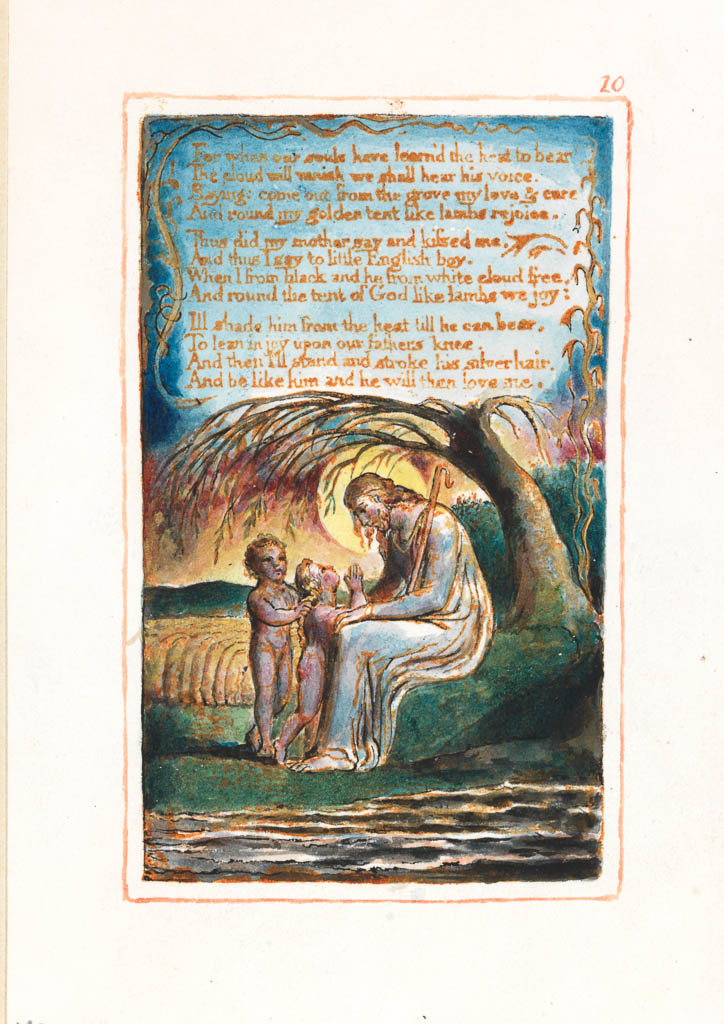
Palmer himself had been introduced to William Blake in 1824 by Blake's patron and Palmer's future father-in-law, John Linnell. The influence of the older man can be seen if we compare The Magic Apple Tree with Blake's 1789 frontispiece to his own collection of poems, Songs of Innocence and Experience (P.125-1950). Here we see another music-making shepherd, surrounded by his happy flock. The trees flanking Blake's piper recall the arboreal arch in Palmer's picture.
Throughout the 1830s, Samuel Palmer's work became steadily less visionary. In 1837 he married Linnell's daughter, Hannah, and began a two-year honeymoon in Italy, where he painted many landscapes, such as the view of Rome from the western hills in the Fitzwilliam 1482. Stylistically this work contrasts sharply with The Magic Apple Tree.
Themes and periods
Data from our collections database
Samuel Palmer; A.H. Palmer; by whom sold at Christie's, 20 February 1928, lot 38 ; A.E. Anderson
Legal notes
Given in memory of his brother, Frank
Acquisition and important dates
- Method of acquisition: Given
- Dates: 1928-09
Dating
- 1830s
- Production date: AD 1830 : see 'notes'
Maker(s)
- Palmer, Samuel Draughtsman
Materials used in production
Read more about this recordStories, Contexts and Themes
Other highlight objects you might like
Suggested Curating Cambridge products
Sign up to our emails
Be the first to hear about our news, exhibitions, events and more…
